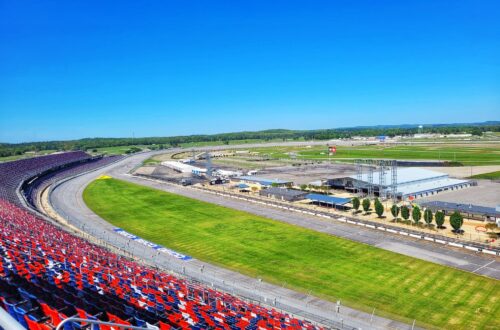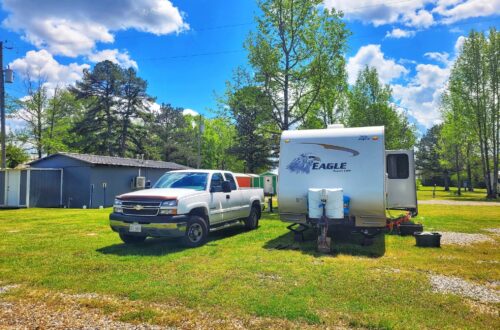We did a double feature adventure day visiting both the ruins of the Lincoln Park Nursery and the burial site of the first nuclear reactor in Lemont, IL. These sites are located within Waterfall Glen preserve in DuPage County and Red Gates Woods preserve in Cook County, respectively- but only 7 minutes apart.
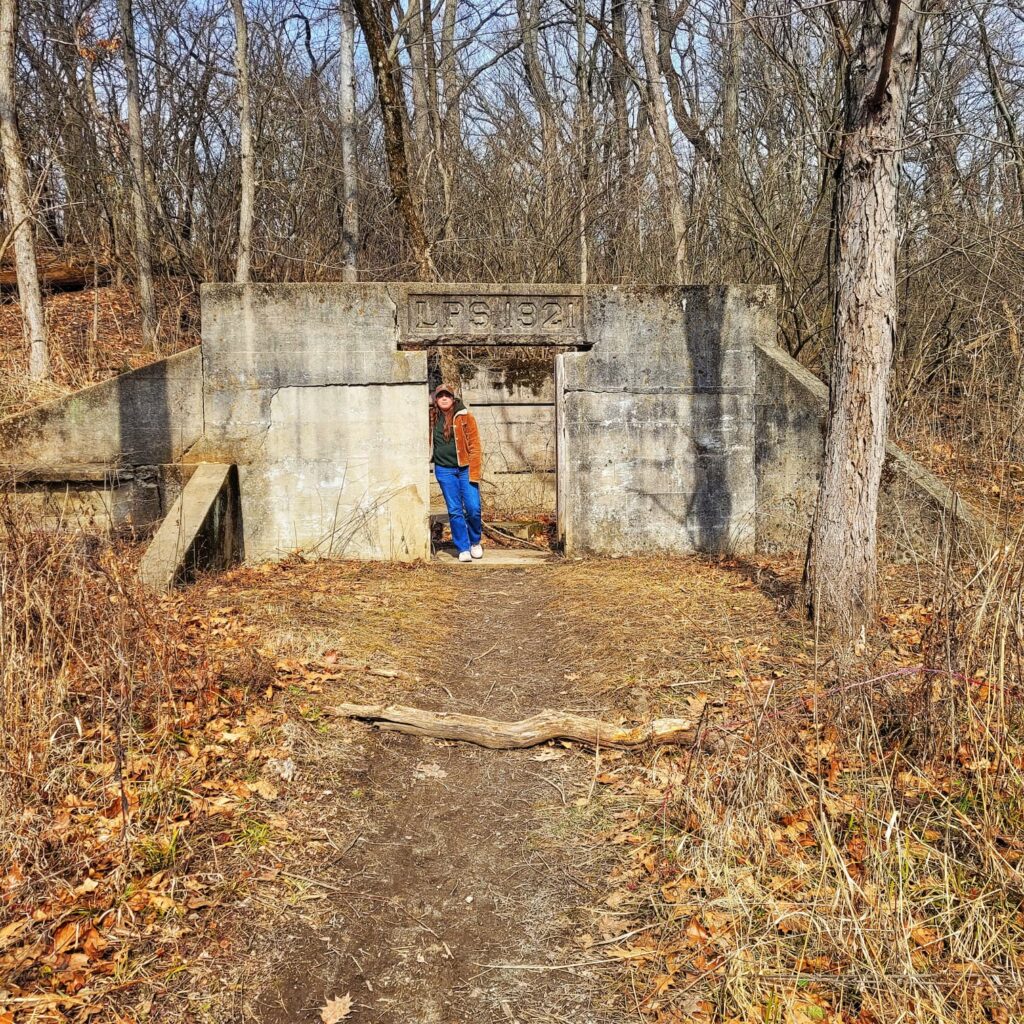
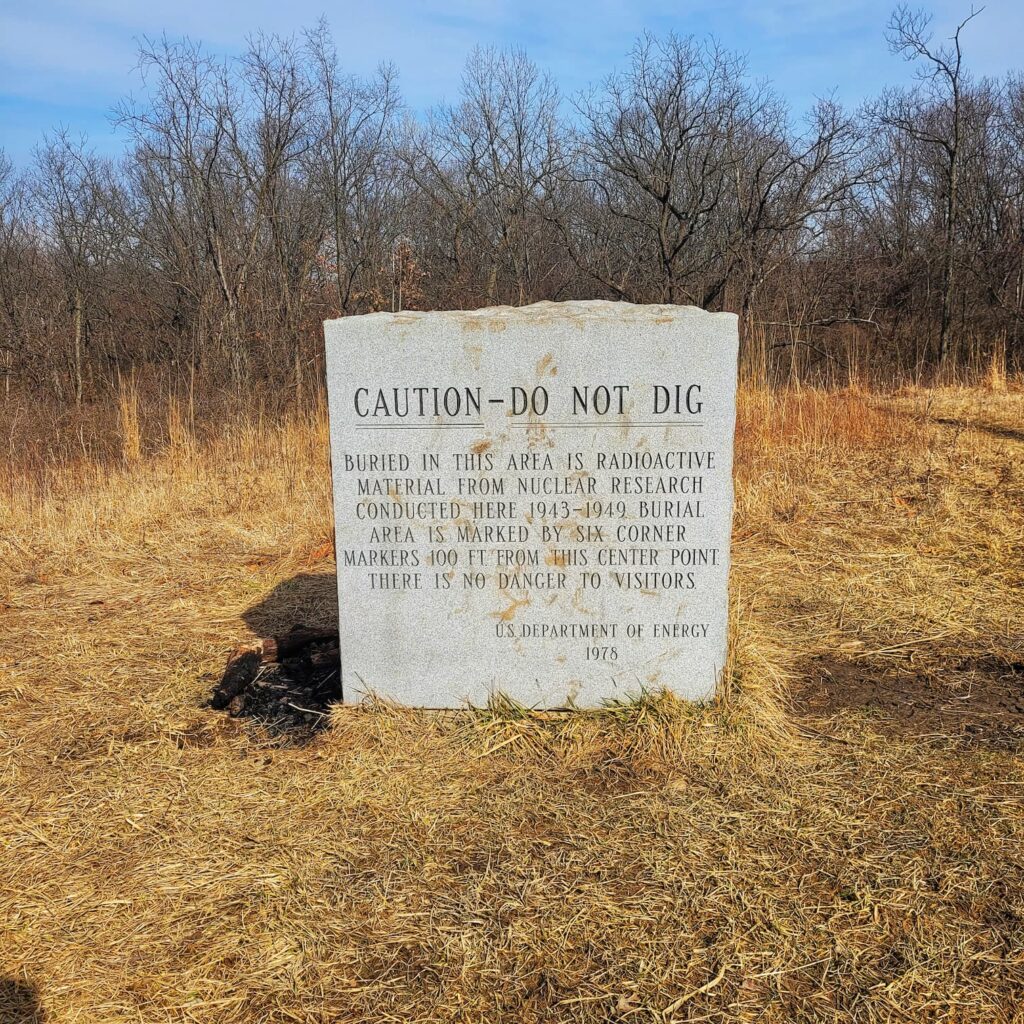
Visiting Waterfall Glen Preserve
We started our adventure at Waterfall Glen preserve to see the Lincoln Park Nursery ruins, but the preserve is actually pretty interesting in its own right. The main claim to fame is the waterfalls of the tiered dam that the CCC constructed in the 1930’s. Even though that’s the most famous feature, the park wasn’t actually named for it. The moniker actually comes from Seymour “Bud” Waterfall who had a 26 year run as the president of the Forest Preserve District of DuPage County. When Mr. Waterfall died in 1971, local groups requested changing the name of the park from its original Rocky Glen to Waterfall Glen. Obviously they were successful, since the name still stands- even if most people have no idea why.
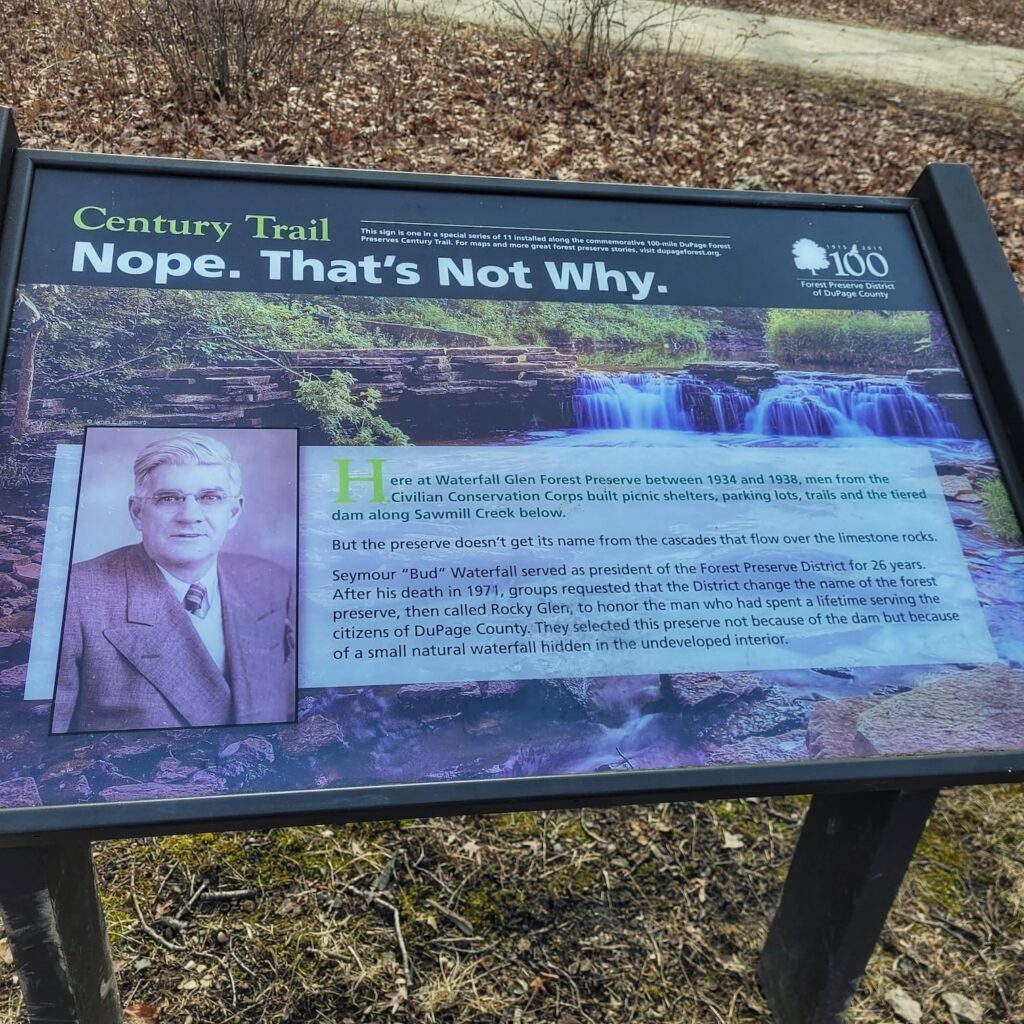
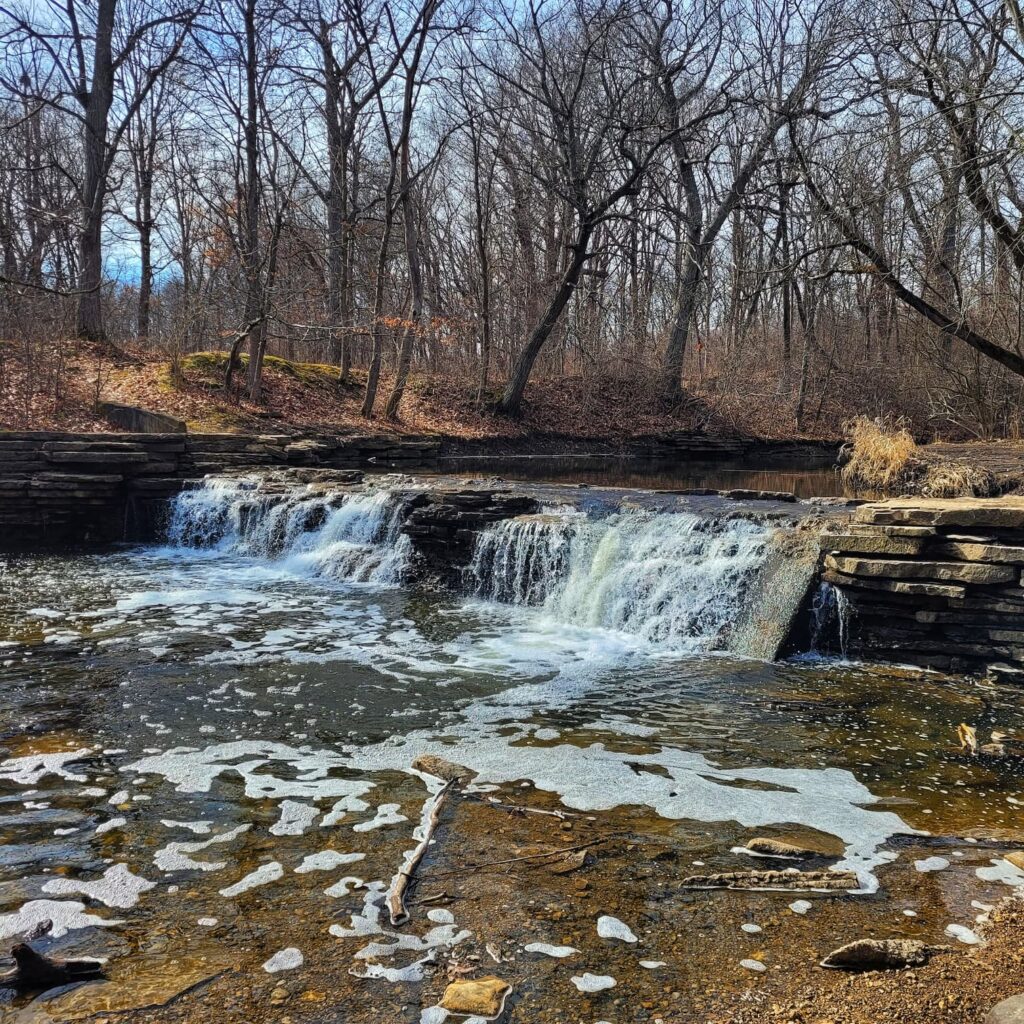
Enough About Waterfalls, Let’s Go Find the Lincoln Park Nursery Ruins
Ok, so what about the ruins? Everyone in Illinois knows Lincoln Park, the largest park in Chicago, but it actually started as a smaller park. To grow it into the mega park it is today, they needed to fill in miles of Lake Michigan shoreline. This meant they needed a lot of dirt. The Lincoln Park Commission purchased 100 acres in Lemont in the early 1900s to gather fill material, and to establish a nursery. Workers loaded dirt, rocks, trees, and other plants onto barges and carried upstream on the Chicago Sanitary and Ship Canal to the city. By 1925 they were done and the Forest Preserve District bought the property.
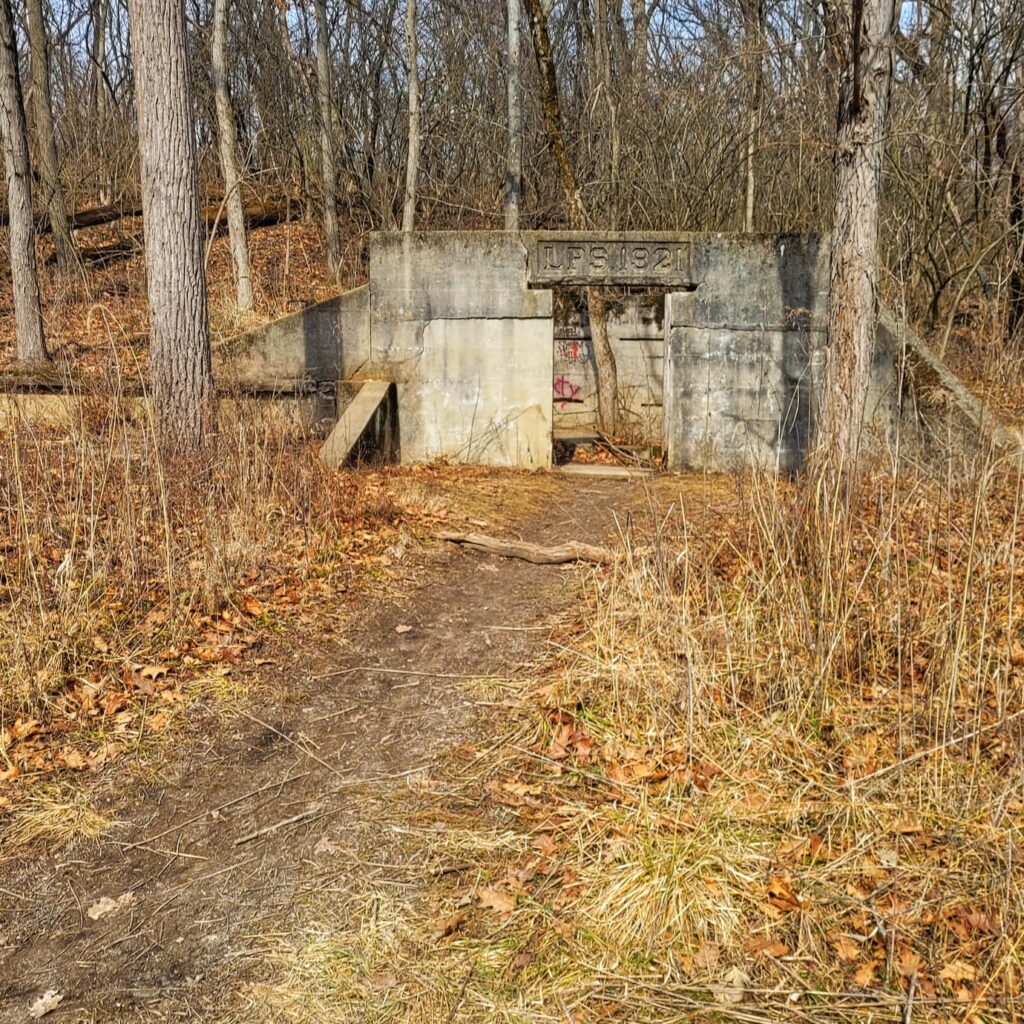
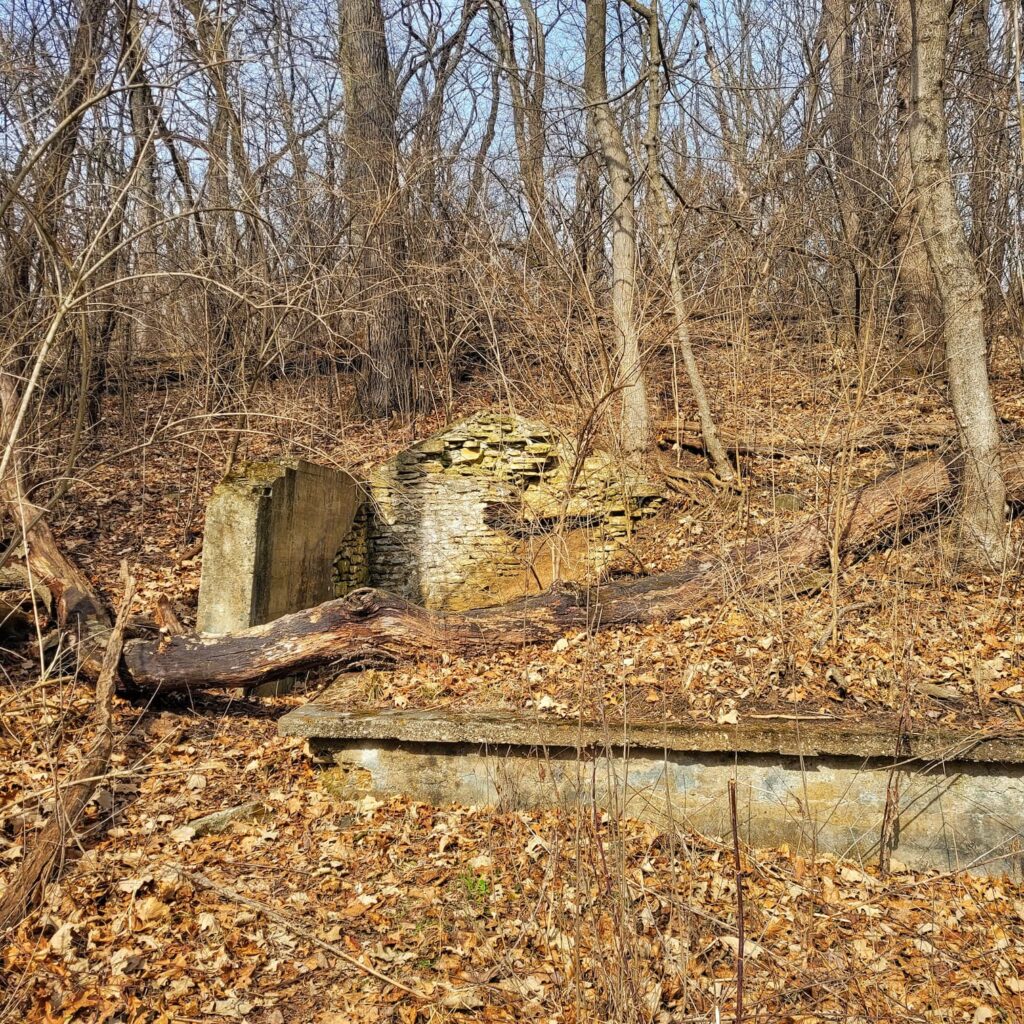
To get to the ruins we parked at the waterfall parking lot and headed West on the Main Trail. The official trail map on the FPDDC website has the ruins marked. The ruins were right near the path and easy to find. You can tell the nursery was pretty big, because the ruins stretch a good length of the trail. The most iconic part of the ruins is the LPS 1921 marking over a doorway that still sands. You can walk up to and into this part of the old building.
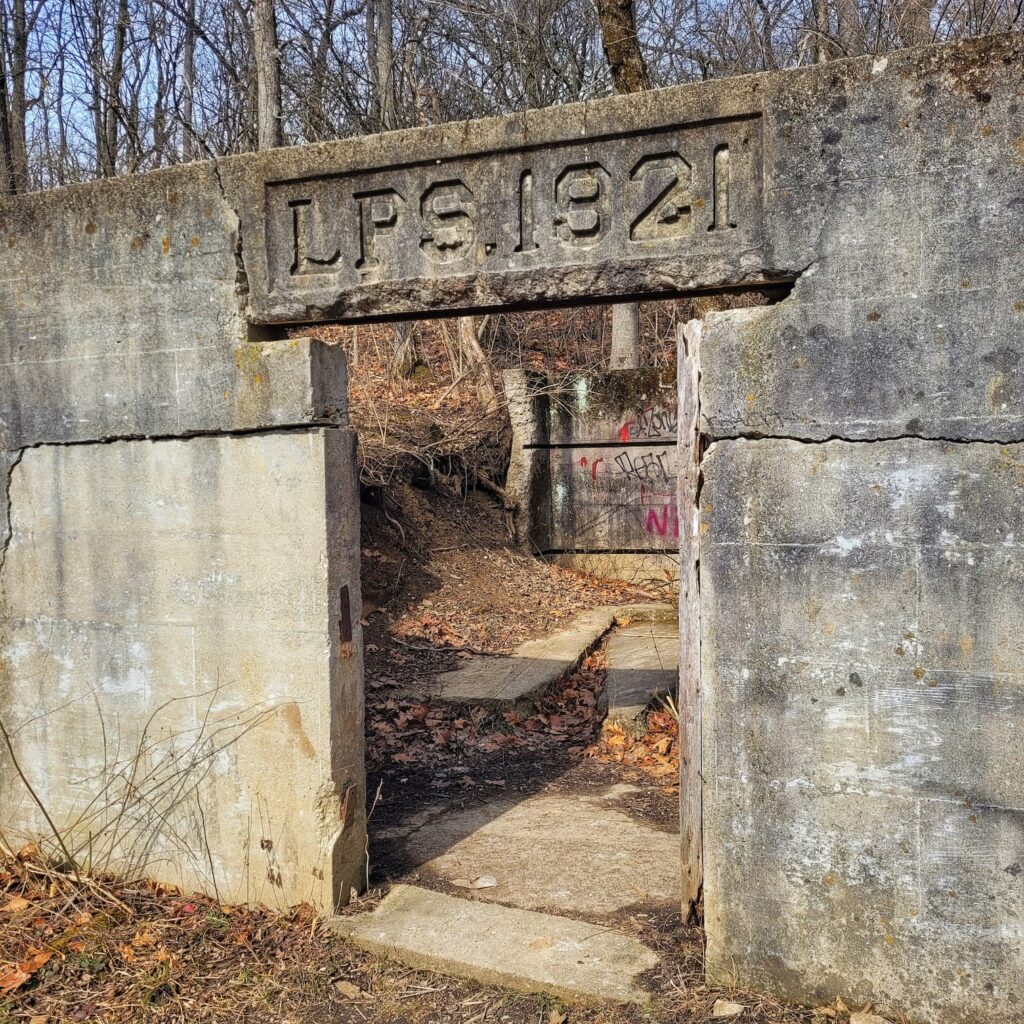
Book Recs
If like us, you love abandoned places and Illinois history, you’ll want to check out Lisa Beard’s Abandoned Illinois: Forgotten Places and Lost Histories, which is full of beautiful photos. I got a copy for Christmas a couple years ago and it’s so fun to flip through.
We’re also big fans of the Images of America books, which are full of historic photos. You can find books about so many places, and there’s even one about Chicago’s Lincoln Park that was created by the Chicago Historical Society.

The Manhattan Project In Illinois
After seeing the nursery ruins and the waterfall, we hopped in the car for the short drive over to Red Gate woods. Red Gate is part of the Forest Preserves of Cook County and surrounds Argonne National Laboratory, which we visited in 2023 for an open house event. Especially in the post-Oppenheimer-Oscar-sweep era, people are well aware of the Manhattan Project, but many still don’t know about Chicago’s part of that history.
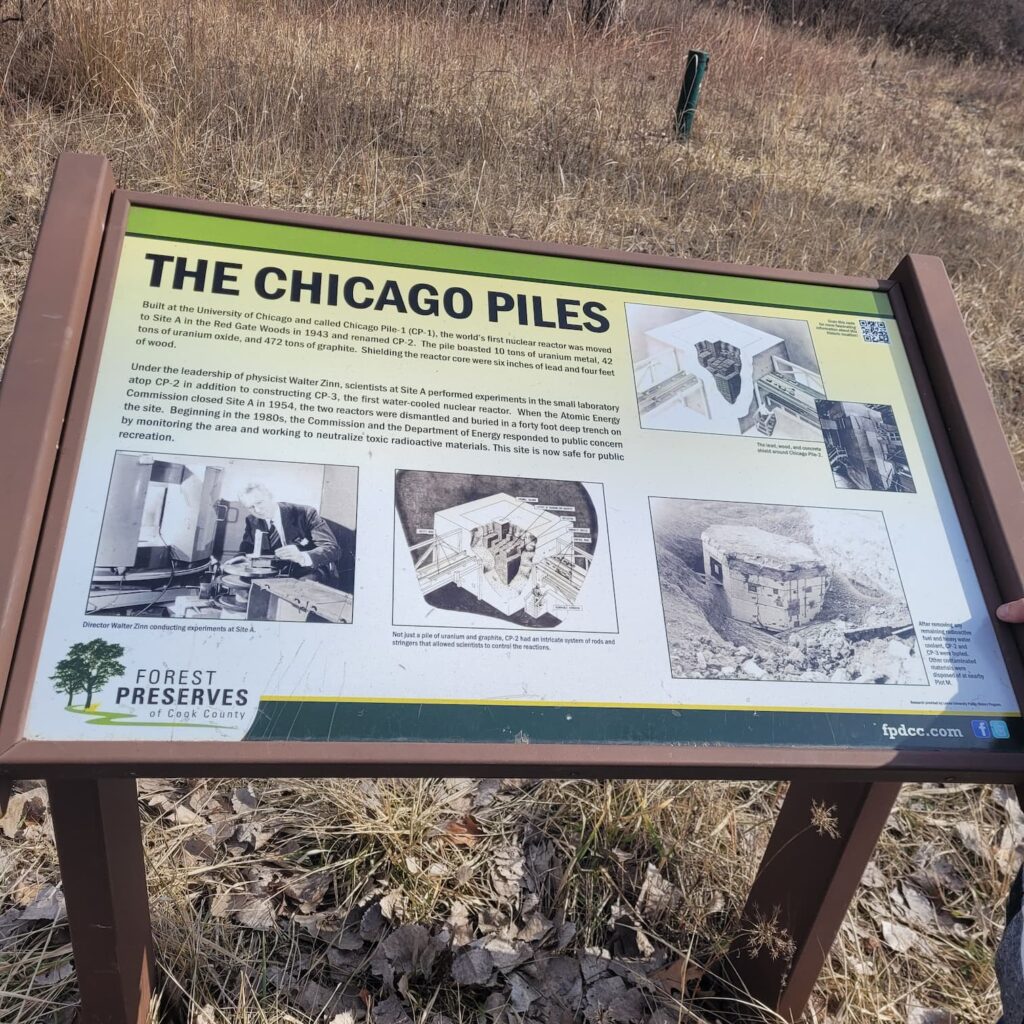
The Metallurgical Lab (Met Lab) was one of the most important labs for starting the Manhattan Project. It was secretly constructed in an unused squash court under the football stadium of the University of Chicago. The team established at Met Lab had the goal of producing a self-sustaining nuclear reactor. If successful, this proof of concept would provide a model for large-scale plutonium production. The team led by Enrico Fermi (yes, the one Fermi Lab is named after) had no safety features when working with the reactor. There was nothing to shield the scientists from radiation and no way to cool the reactor (how hardcore). Oh, and for the movie buffs wondering, yes Oppenheimer came to UC sometimes. Today, the squash court and stadium are gone, but a commemorative statue and handful of historic markers can be found at the UC site. There’s a great resource page on the University of Chicago website.
What Happened to Chicago Pile-1?
In 1941, on December 2 (my birthday, yay!) Fermi’s team produced the first controlled nuclear chain reaction- a huge step in the progress of atomic science. 49 people were there to witness the historic occasion. Soon after this success, higher ups decided that for safety reasons the reactor should be relocated outside the city. They moved it to Red Gate, codenamed Argonne. They moved the reactor, called Chicago Pile-1, or CP-1, to what they called Site A in 1943. Once moved, they renamed it to CP-2. CP-2 boasted 10 tons of uranium metal, 42 tons of uranium oxide, and 472 tons of graphite. You know, just your average nuclear reactor.
Site A was a whole complex where people lived and worked. There were research labs, a reactor control room, dorms, library, even a dog shelter. Besides experimenting with CP-2, they built a second reactor (CP-3). CP-3 had the distinction of being the first water cooled nuclear reactor, so that’s nifty.
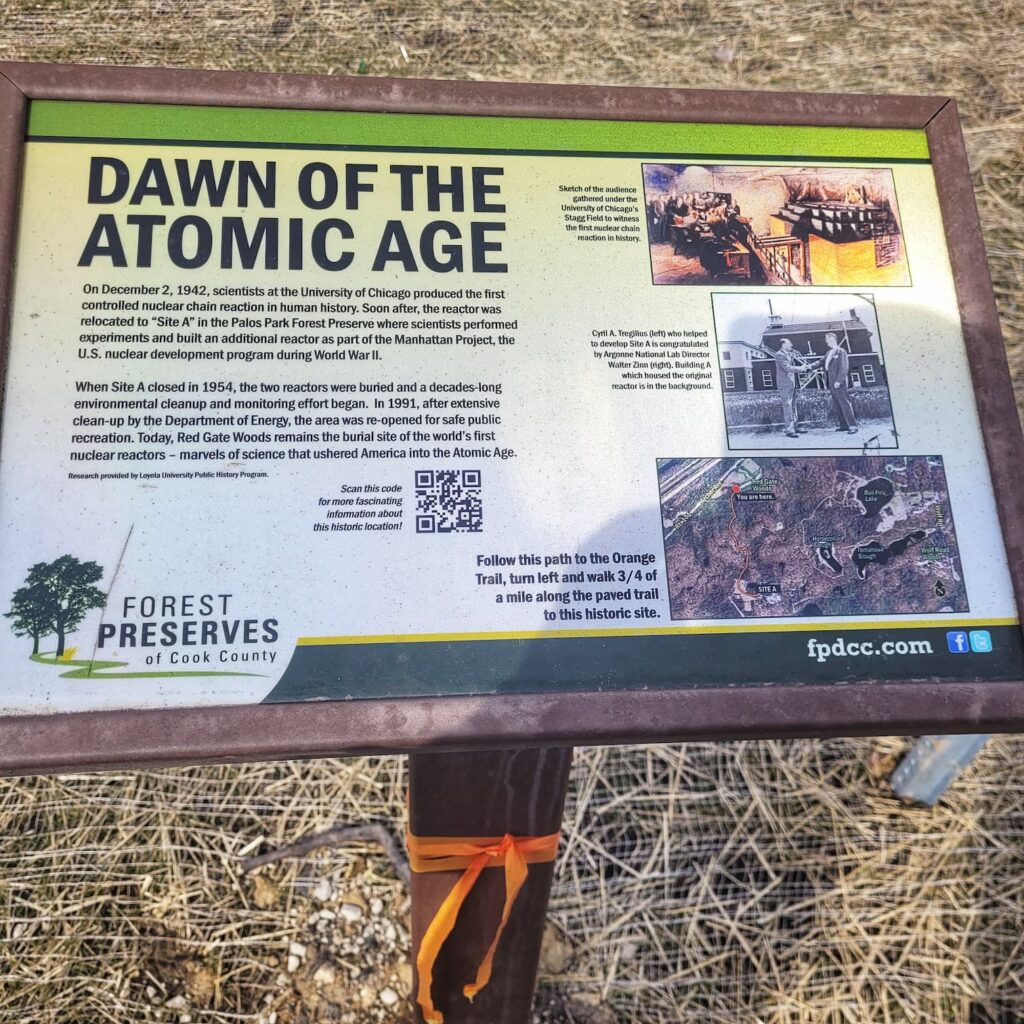
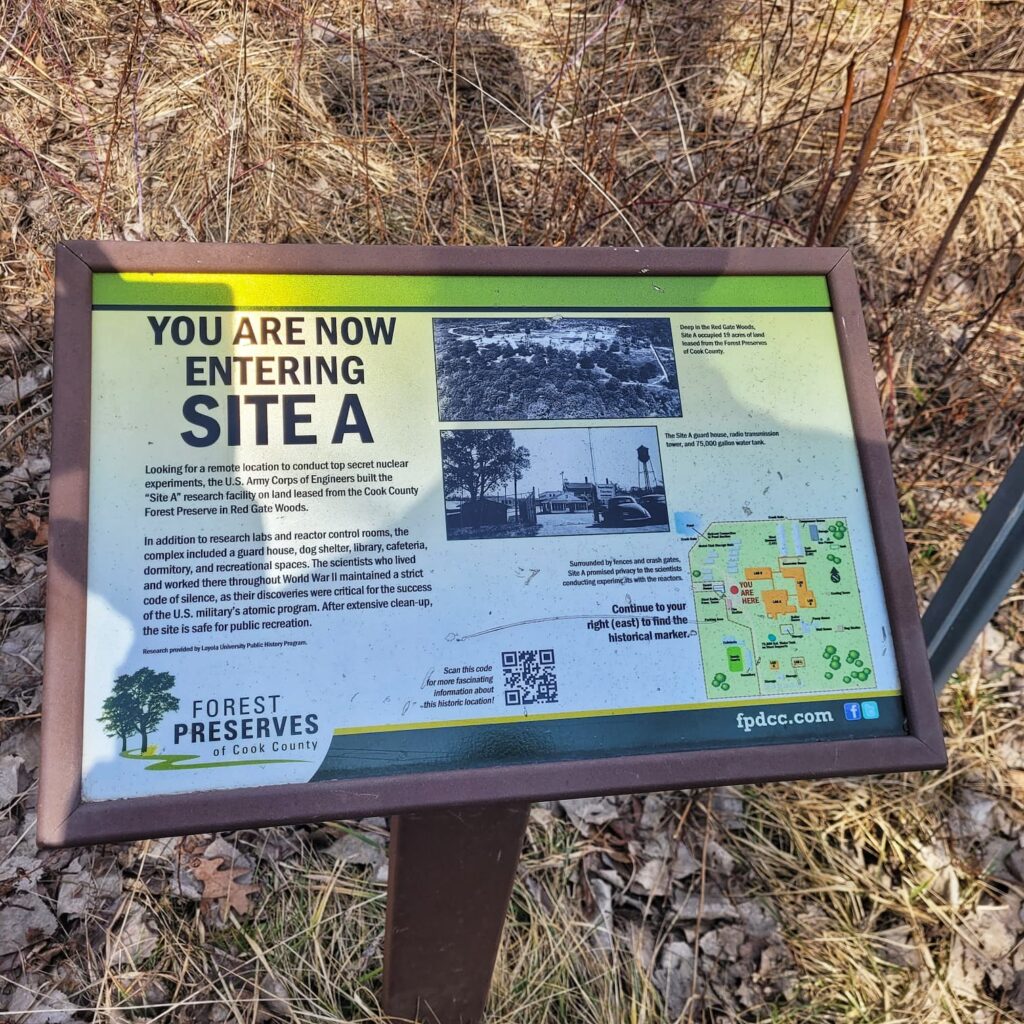
But of course, we all know that these things always come to an end. In 1954 the Atomic Energy Commission closed the site. The reactors were dismantled and buried in a 40 foot deep trench. I mean, where else would you put one? In the 1980s the government finally listened to people and started monitoring and cleaning up the site. In 1991 the Department of Energy decided it was good enough to open to the public again. And now by visiting Red Gate Woods you can visit the burial sites.
Standing On Top of a Buried Nuclear Reactor
There’s one main parking lot at Red Gate, so we started our journey there. The preserve is part of the massive Palos Trail System, which has a lot of cool stuff I’d love to explore more of someday. To reach the CP-2 burial site, we went southwest on the Palos Trail System Orange Single Track until turning off onto the Brown Unpaved Trail (West). We followed that south until going off a side trail to a clearing where the marker for the buried pile is. To make things even easier, it’s clearly marked on Google Maps.

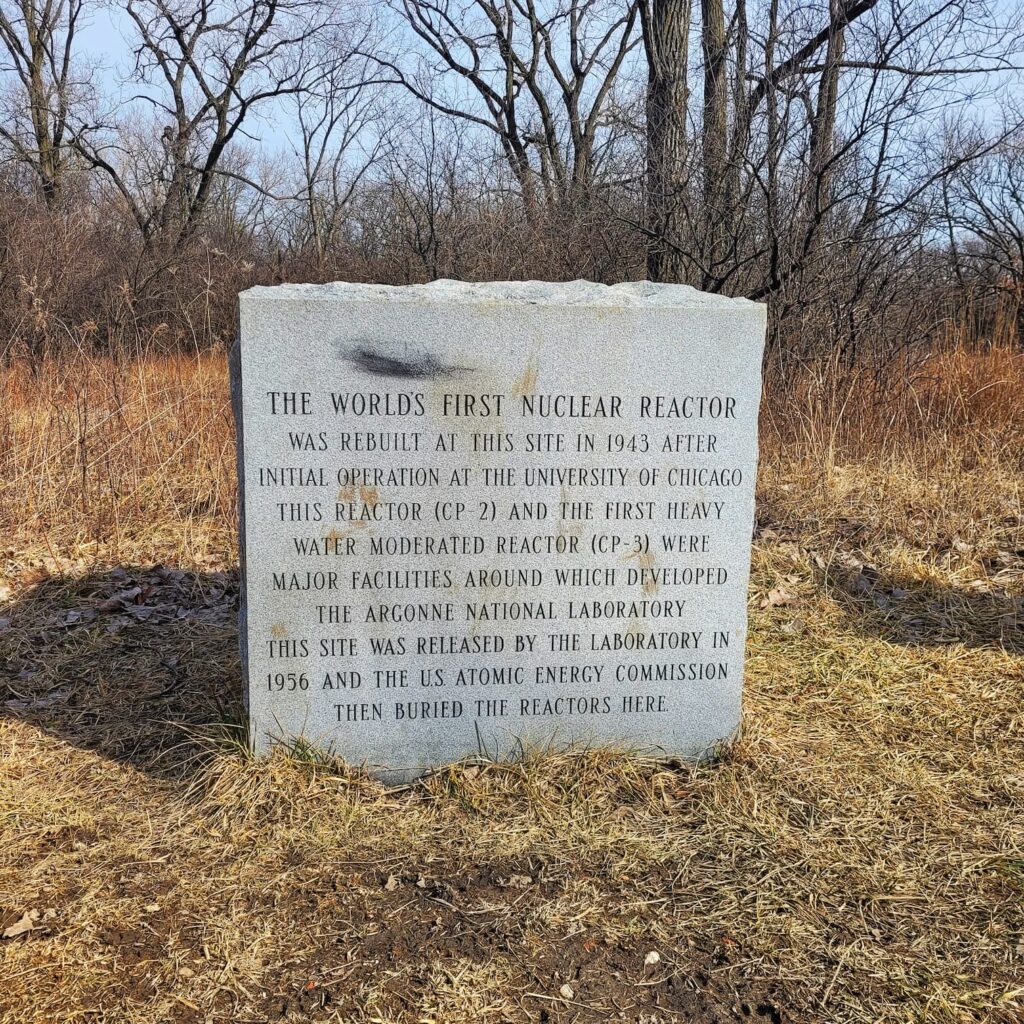
It was definitely an eerie feeling to know you’re standing on top of something that had been so dangerous. The fact that it’s in an overgrown clearing with a small path leading to it didn’t help either. We did find more informational signs farther down the trail, though, so that felt a little less weird.
Book Recs
By now you’ve probably seen Oppenheimer, but we have some recommendations for books if you want to dig deeper too:
- Bomb: The Race to Build–and Steal–the World’s Most Dangerous Weapon by Steve Sheinkin is written for a YA audience, but is still really engaging for adults. A few years ago my book club read it and we all really enjoyed it. There’s a lot of interesting history we didn’t know before, but it was an easy read and not too technical.
- American Prometheus by Kai Bird is probably the best-known biography of Robert Oppenheimer, and was the actual inspiration for the Oppenheimer movie.
- Trinity: A Graphic History of the First Atomic Bomb by Jonathan Fetter-Vorm is another great option if you don’t want something too dry and technical. I’m a big advocate for non-fiction graphic novels, and this is a great way to learn about history while still feeling like it’s fun.
As an Amazon Associate I earn from qualifying purchases.
You Might Also Like…
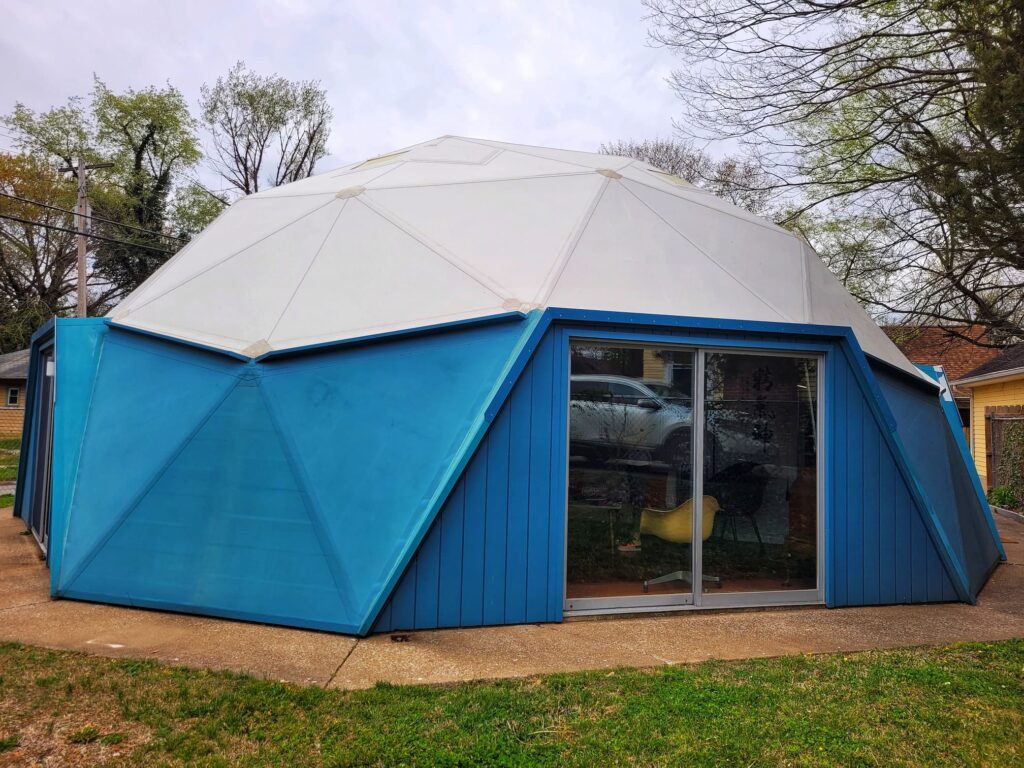
Visiting the Bucky Dome Home Museum: A Geodesic Wonder
We took a tour of the Bucky Dome Home in Carbdonale. This is the only dome home that Buckminster Fuller and his wife ever lived in. The couple lived here in the 1960s when Fuller was a professor at SIU.
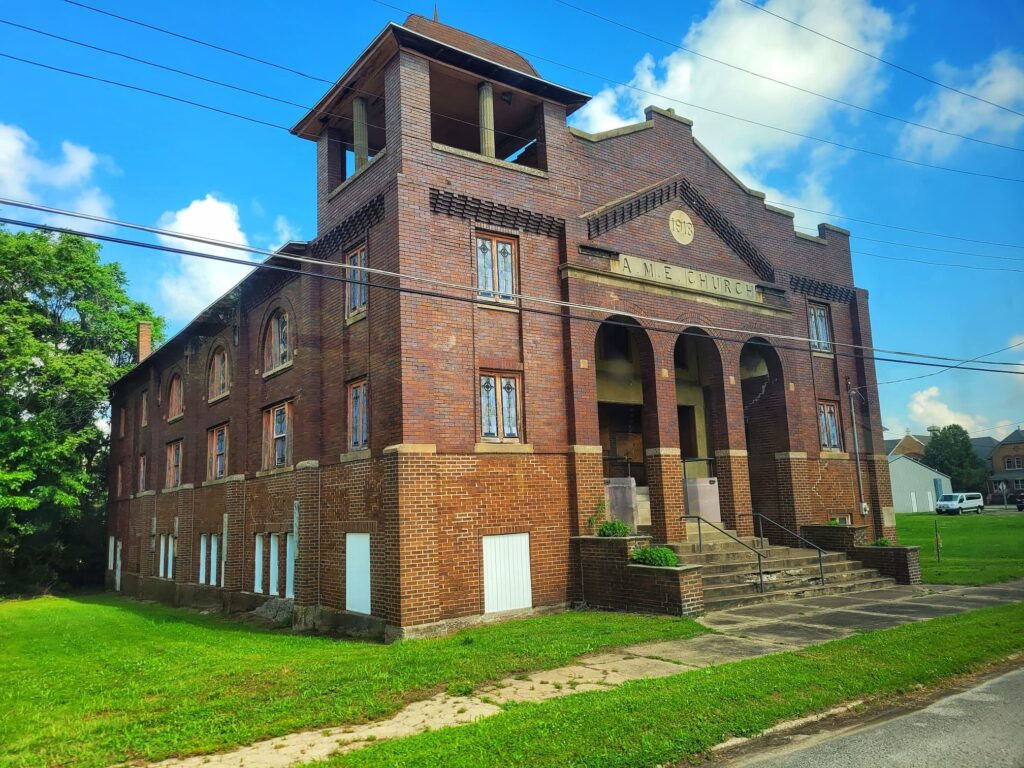
A City at a Confluence: Visiting Cairo, Illinois
People warned us not to go to Cairo. But we did anyways. And yes, we found destruction and decay. But we also found hope. Hope from the people desperately trying to preserve their town and its history.
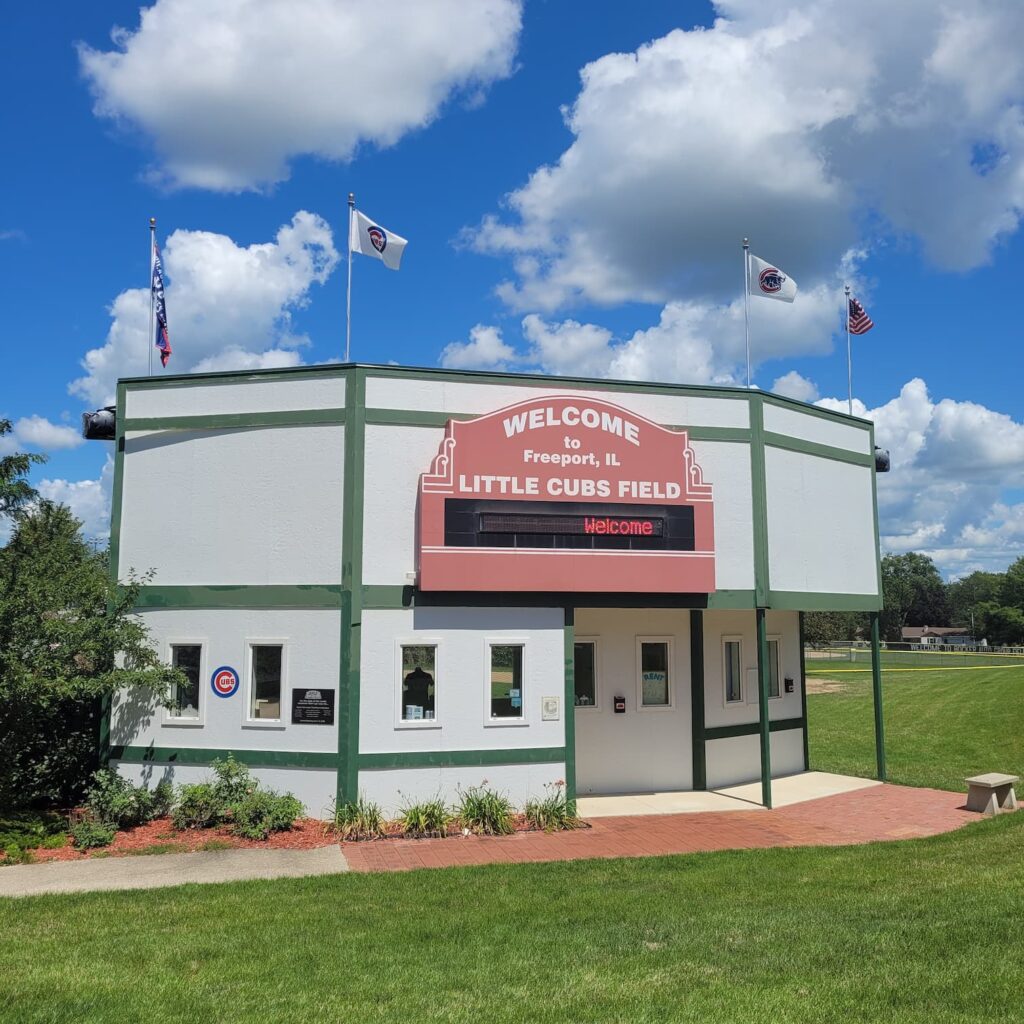
Hidden Gems of Northwest Illinois: A Two Day Roadtrip
I took a mini roadtrip through Northwest Illinois, with stops in Byron and Freeport. This corner of the state is full of quirky roadside attractions, local history, and scenic views. Our itinerary could be done as a 1 or 2 day trip.



